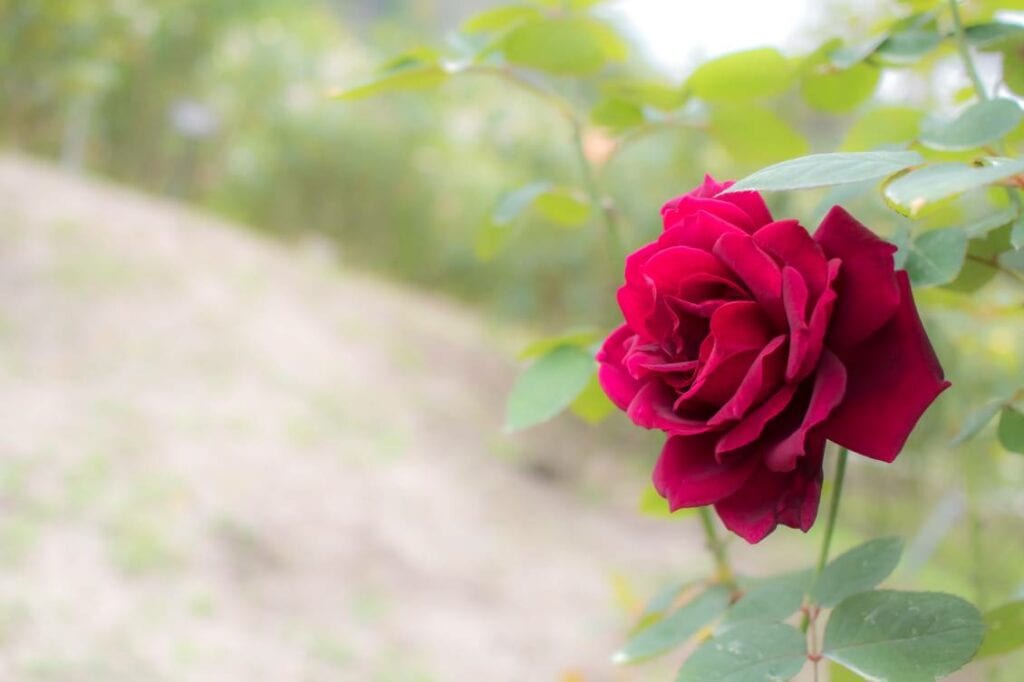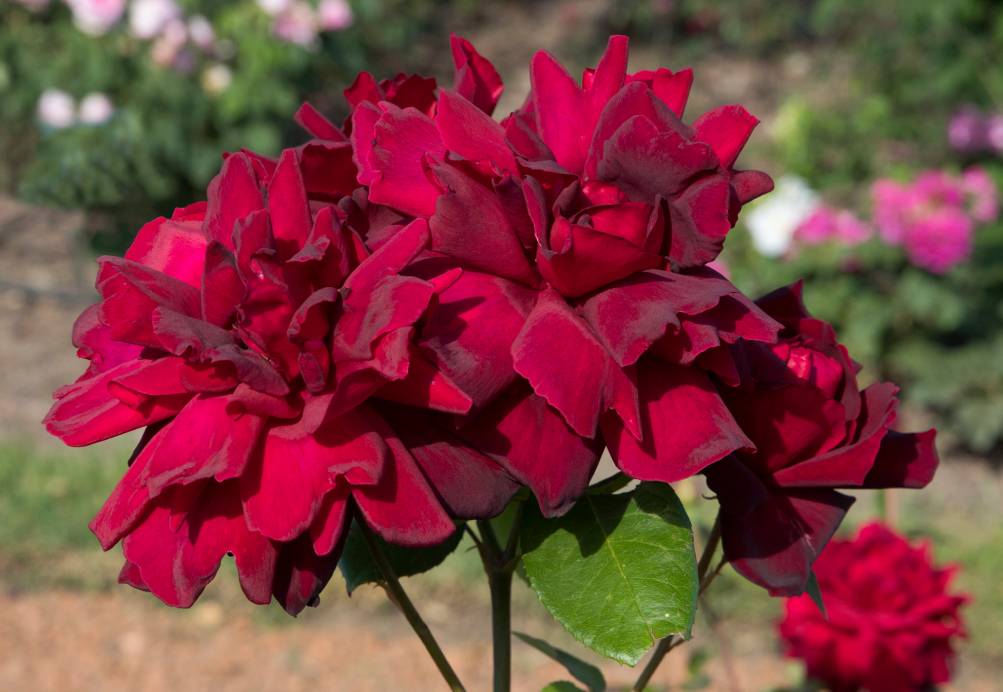What Is the State Flower of Oklahoma? History, Facts, & FAQ
-
Lindsey Lawson
- Last updated:

State symbols have an interesting history and can teach you a lot about each state in the US. The state symbols of Oklahoma will teach you about the cultural heritage and the natural wonders that exist within the boundaries. We know that native animals and plants are featured in state symbolism, and the state flower of Oklahoma is nothing other than the beautiful, crimson-red Oklahoma Rose. We are here to talk more about this unique rose and how it managed to become the state flower of the Sooner State.
 The Oklahoma Rose
The Oklahoma Rose
The Oklahoma Rose or the Rosa Oklahoma is a hybrid tea rose that was developed in 1963 at the Oklahoma State University by Herbert C. Swim and O. L. Weeks. The rose was officially introduced in 1964 and became incredibly popular because of its gorgeous velvety crimson red petals.
The rose bush can grow from 4 to 8 feet tall and 3 to 4 feet wide. It features dark green leathery leaves and blooms in flushes from spring into the early fall. The flowers emit a fragrant scent and have up to 50 petals each. These roses are very disease-resistant and make an excellent choice for flower beds, hedges, and containers.
They grow best in rich, well-drained fertile soil with adequate moisture and full sun. They can be propagated during the spring by chip budding or by hardwood cuttings in the fall. They make excellent cut flowers and do well in vases.
The State Flower of Oklahoma
The state flower of Oklahoma is the oldest state symbol that dates back to 1893. The Mistletoe was the original state flower that had taken its place as a symbol for Oklahoma several years before it gained statehood in 1907.
The Mistletoe received much controversy over the years, ultimately leading the Oklahoma Rose to take its place in 2004. This was due to over 180 gardening clubs lobbying the legislature to adopt this Oklahoma-bred hybrid rose as the official state flower.

From Mistletoe to the Oklahoma Rose
The Mistletoe (Phoradendron serotinum) was designated as the state’s floral emblem on February 11, 1983, and was the first ever official floral emblem established by any legislature. The Mistletoe was revered by some but met with controversy from the get-go but when Oklahoma reached statehood in 1907, Senator John Golobie filed a bill to keep the mistletoe as the floral emblem for the state.
The issues with the mistletoe remained because it is parasitic and lives off the water nutrients of host trees. Many Oklahomans didn’t take well to this being a representation of their beloved state. The mistletoe maintained its place against the push for the alfalfa blossom to take its place during the early 1900s.
The controversy started up again during the 1980s regarding the mistletoe and a push for the Indian Blanket to take its place. Representative Kelly Haney of Seminole, Oklahoma wrote legislation to name the Indian Blanket as the state’s official wildflower, separate from the state flower.
This bill did pass the legislature and the brand-new symbol was honored through a ceremony held in Oklahoma City that was attended by representatives from over twenty Native American tribes.
Despite all the controversy, the mistletoe remained the state flower until the year 2004 when Governor Brad Henry signed a bill into law making the Oklahoma Rose the official state flower after much lobbying to the legislature ultimately influenced the decision.
 Conclusion
Conclusion
The mistletoe was the state flower of Oklahoma for many, many years under much scrutiny due to it being a parasitic species. After much controversy and many gardening clubs lobbying the legislature, the Oklahoma Rose was officially declared the state flower in 2004 under Governor Brad Henry. This gorgeous crimson red rose is a hybrid tea rose that was created at Oklahoma State University in the 1960s, making it a beautiful representation of the state.
Featured Image Credit: Eiko Tsichiya, Shutterstock
Contents
 The Oklahoma Rose
The Oklahoma Rose